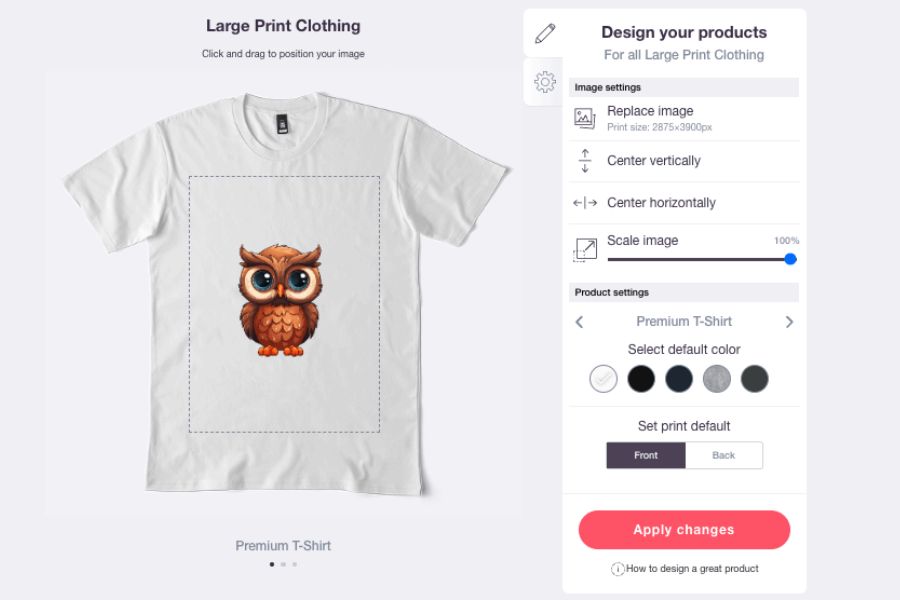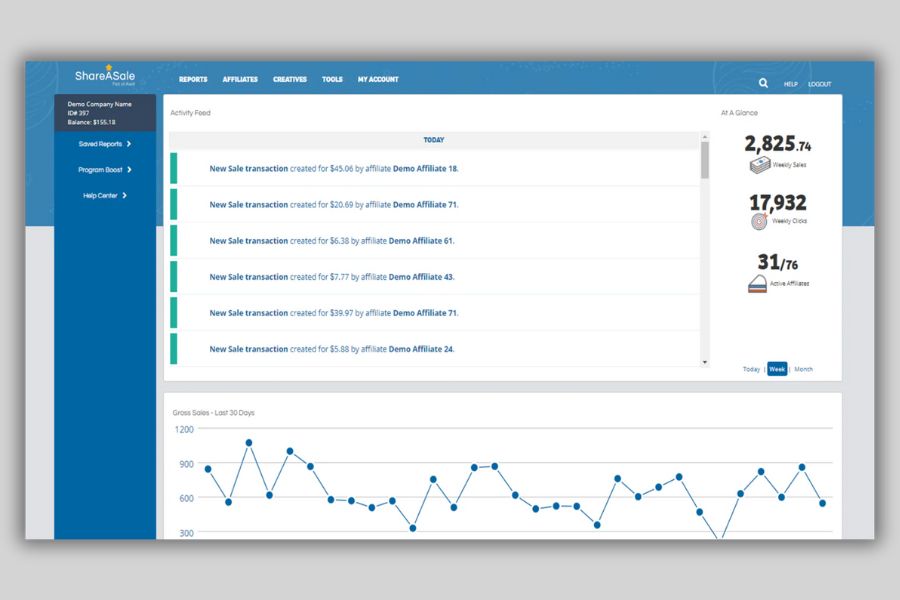Print on demand is revolutionizing how everyday people build profitable online businesses. You don’t need to worry about inventory or upfront costs. This business model allows you to create custom products like t-shirts, mugs, and wall art. Products are only made after customers place orders, so you never get stuck with unsold stock.
Earning $3,000 per month with print on demand is possible. The keys are choosing the right niche, creating designs people love, and using smart marketing. I’ve watched entrepreneurs break through with this approach. The biggest barriers—inventory and storage—disappear. You can focus on what matters: designing products and connecting with your audience.

The print on demand market is booming. Experts predict growth from $8 billion in 2023 to $87 billion by 2033. There’s plenty of room for new sellers. With the right strategy, you can build a sustainable income that works even while you sleep.
Key Takeaways
- Print on demand removes inventory risks by making products after customers order.
- Success comes from picking profitable niches, creating great designs, and optimizing marketing.
- Multiple income streams and consistent product listings help you scale to $3,000+ monthly.
Print on Demand Fundamentals
Print on demand lets you sell custom products without holding inventory. You can focus on design and earn passive income.
Here’s how the zero-inventory system works and which platforms can help you hit $3,000 a month.
What Is Print on Demand and How It Works
Print on demand is simple. Products get made only after someone orders. You create designs and upload them to print on demand platforms. They handle the rest.

Here’s my step-by-step process:
- I design graphics for products like t-shirts or mugs.
- I upload those designs to a POD platform.
- The platform lists my products in their marketplace.
- When someone buys my design, the platform prints and ships it.
- I earn a commission from each sale.
I never touch inventory. Printing, packaging, and shipping are all handled for me. This means my designs can sell around the clock. Once I upload them, they work for me 24/7.
Zero Inventory Business Model Explained
The zero inventory model means I never buy or store products upfront. Traditional retail requires you to buy inventory and hope it sells.
With print on demand, I skip these risks:
- No upfront inventory costs
- No storage space required
- No worrying about unsold products
- No shipping headaches
I only pay when a product sells. The platform takes a cut, and I keep the rest. This makes it easy to test new designs. If something doesn’t sell, I lose nothing but time.
Key Platforms for Print on Demand Success
I’ve tried many platforms on my journey to $3,000 a month. Here are the best options:
| Platform | Best For | Commission Rate |
|---|---|---|
| Redbubble | Beginners, built-in traffic | 15-20% |
| Etsy | Custom designs, handmade feel | Keep 90%+ |
| Amazon Merch | High volume sales | 10-37% |
| Printful + Shopify | Your own brand | Keep 100% profit |
Redbubble is perfect for beginners. They have millions of shoppers looking for unique designs. Etsy allows you to charge higher prices. Shoppers expect unique, handmade-style products. Amazon Merch gives you massive reach, but you need approval to join.
Printful with Shopify lets you control your brand and pricing. You’ll need to drive your own traffic. Start with Redbubble to learn the ropes. As you grow, expand to other platforms for more income.
Steps to Make $3,000 Monthly With Print on Demand
Building a $3,000 monthly income takes smart niche selection, quality designs, optimized listings, and automation. Let’s break down each step to reach this goal.
Choosing Profitable Niches and Products
Your first step is picking the right niche. Evergreen markets like pet lovers, fitness fans, and hobby groups work best.

High-Converting Product Categories:
- T-shirts and hoodies (30-40% of sales)
- Coffee mugs and drinkware (20-25% of sales)
- Phone cases and accessories (15-20% of sales)
- Home decor items like wall art (10-15% of sales)
I use free tools like Google Trends and Pinterest to spot trending keywords. Look for niches with high search volume and low competition. Pet designs are a goldmine. Dog breed shirts and cat mom mugs sell year-round because people love showing off their pets.
Avoid crowded niches like generic motivational quotes. Instead, narrow down to specific sub-niches, such as “hiking with dogs” or “coffee and cats.”
My Niche Research Steps:
- Check Amazon Best Sellers in your category.
- Browse Etsy for top-selling designs.
- Use keyword tools to find search volume.
- Join Facebook groups in your niche.
Design Creation and Graphic Design Tips
Great design is the secret to strong sales. I keep my designs simple, clean, and eye-catching.
Design Essentials:
- Bold, readable fonts (at least 12pt)
- High contrast colors for visibility
- Simple graphics that look good on any product
- Clear, short messaging (five words or less)
I use free tools like Canva or GIMP for basic designs. Witty sayings or relatable quotes work well for text-based designs.
My Design Best Practices:
- Stick to four colors or fewer to save on printing
- Use vector formats (PNG with transparent backgrounds)
- Test designs on product mockups before uploading
- Create variations for different products
Typography often outperforms complex graphics. I’ve sold thousands of simple text designs with clever phrases.
I always check copyright before using any images or fonts. Original designs or royalty-free graphics keep things safe.
Best Practices for Listing Optimization
SEO helps customers find your products and drives sales. Each listing should be like a mini-website that’s easy to find.

Title Formula:
Primary Keyword + Product Type + Audience + Benefit
Example: “Dog Mom Shirt – Funny Pet Lover Gift – Soft Cotton Tee”
I put the main keyword in the first few words of the title. This boosts visibility on Etsy and Amazon.
SEO Must-Haves:
- 13 relevant tags on Etsy (use every slot)
- Keyword-rich descriptions (at least 150 words)
- High-quality photos (five or more per listing)
- Competitive pricing based on similar products
I write descriptions that tell a story. Instead of just listing features, I show how the product fits into the buyer’s life.
Product photos are crucial. I use bright, clean images and lifestyle mockups so buyers can picture themselves using the product.
Scaling Up: Automation and Passive Income Streams
Once you’re earning consistently, automation helps you grow without working more hours. Passive income becomes real.
Automation Tools I Use:
- Printful or Printify for automatic order fulfillment
- Canva Pro for design templates
- Marmalead for Etsy keyword research
- Social media schedulers for marketing
I create design templates that can be quickly customized for different niches. One template can turn into 20+ products.
Scaling Tactics:
- Upload 5-10 new designs each week
- Expand best-selling designs to more products
- List on multiple platforms (Etsy, Amazon, Shopify)
- Reinvest profits into paid ads
If a cat design sells well, I make matching mugs, shirts, and phone cases. I track which designs do best and create similar styles.
Here’s how $3,000 breaks down:
- 150 products earning $20 each = $3,000
- 75 products earning $40 each = $3,000
- 50 products earning $60 each = $3,000
A big catalog means each product only needs to contribute a little to your monthly goal.
Promoting Your Print on Demand Business
Promotion is the fuel for your print on demand business. You can use affiliate partnerships, blogging, YouTube, and email marketing to drive steady traffic and sales.
Affiliate Marketing for Print on Demand
Launching an affiliate program grows your reach without big ad budgets. Offer 15-25% commissions to attract motivated partners.
Top Affiliate Platforms:
- ShareASale
- Commission Junction
- Impact Radius

Find affiliates in your niche. If you sell fitness apparel, connect with fitness bloggers and influencers. Make it easy for affiliates to promote your products. I provide high-quality images, ready-made posts, and email templates. Track affiliate performance with UTM codes and custom links. Build relationships with your top performers.
Set clear terms and pay affiliates monthly. Detailed reports help everyone stay on track.
Leveraging Blogging for Traffic and Sales
A blog brings organic traffic and builds your authority. Create helpful content for your target customers.
Blog Ideas:
- How-to guides for your niche
- Product styling tips
- Industry news and trends
- Customer stories
SEO is key. Target keywords your customers are searching for. If you sell dog shirts, write posts like “10 Ways to Show Your Dog Love.” Mix value with promotion. I aim for 80% helpful content and 20% product mentions. Guest posting on other blogs builds backlinks and exposes your brand to new readers.
Update old posts with fresh info to keep search engines happy.
YouTube Channel and Video Strategies
YouTube is a powerful tool for showcasing your products and connecting with customers. I create videos that entertain and inform.
Video Ideas:
- Product unboxings and reviews
- Behind-the-scenes design process
- Styling tips for your products
- Customer testimonials
Optimize titles and descriptions with keywords. Tools like TubeBuddy help you find what’s trending.
Keep branding consistent. Use the same intro and color scheme for every video.
Posting Schedule:
- 2-3 videos per week
- Same days and times each week
Reply to comments quickly. Engagement boosts your channel in YouTube’s algorithm.
Always include a clear call-to-action. Tell viewers to visit your store or subscribe for more.
Email Marketing for Lead Generation
Email is my highest-ROI channel. I build my list with valuable freebies that attract my ideal customers.

Lead Magnet Ideas:
- Style guides for your products
- Exclusive discount codes
- Free design templates
- Size and fit guides
Use exit-intent popups to catch visitors before they leave. Offer a 10-15% discount for new subscribers.
Segment your list by interests and purchase history. Send dog lovers dog designs, and cat fans cat products.
Email Campaigns:
- Welcome series for new subscribers
- Weekly newsletters with new arrivals
- Abandoned cart reminders
- Post-purchase follow-ups
Write subject lines that spark curiosity. “Your new design is waiting” beats “50% off everything.”
Test different days and times. For me, Tuesday and Thursday mornings work best, but try what fits your audience.
Expanding Income Streams Beyond Print on Demand
Once your print on demand business is rolling, you can branch out. Digital products, online courses, and remote work offer extra ways to boost your monthly income with little upfront cost.
Ebooks and Digital Products
Writing ebooks is one of the fastest ways to turn your expertise into income. Share your knowledge on design tips, business strategies, or any subject you know well. Platforms like Amazon Kindle Direct Publishing let you publish for free. Start with short guides of 20-30 pages that solve specific problems for readers.
Digital products go beyond ebooks. Think about creating design templates, printable planners, or digital art collections. Business checklists also make popular digital products. Once you create these, they can generate sales over and over again.
Price your ebooks between $2.99 and $9.99 for the best results. Digital planners sell especially well on Etsy, and some creators earn over $1,000 per month from templates alone.
Online Courses and Training
Online courses can become a steady source of passive income. If you have print on demand experience, others want to learn from you. Popular course topics include starting a print on demand business, design software tutorials, and marketing strategies. Platforms like Teachable and Udemy handle payments and hosting. I recommend launching your first course in the $49 to $199 range.

Video content works best for online courses. Screen recordings of your process help students learn faster. Many creators earn $2,000 to $5,000 per month from course sales. Sharing your real-world experience can inspire and educate others.
Freelance Writing and Proofreading Jobs
Freelance writing offers quick income while you build your business. If you have experience in entrepreneurship, design, or marketing, clients will value your insights. Content mills like Textbroker pay $15 to $30 per article for beginners. As you gain experience, clients on Upwork may pay $50 to $100 or more per piece.
Proofreading jobs require less creative energy than writing. Companies like Scribendi hire remote proofreaders for $15 to $22 per hour. Proofreading tasks range from blog posts to business documents and academic papers. Marketing materials often need a careful review as well.
Building a client base takes a couple of months, but established freelancers can earn over $3,000 each month.
Virtual Assistant and Transcription Jobs
Virtual assistant work provides steady income and flexible hours. Many online business owners need help with customer service, social media, or administrative tasks. Common VA services include email management and social media posting. Data entry and customer support are also in high demand.
Virtual assistant rates range from $10 to $25 per hour, depending on your skills and experience. Transcription jobs involve turning audio into text for companies like Rev and TranscribeMe. Beginners earn $15 to $22 per audio hour in transcription. Good typing speed and attention to detail help you succeed in this field.
Experienced transcriptionists can earn $20 or more per hour. Both roles are great entry-level options that fit around your business schedule.
Frequently Asked Questions
Starting a print on demand business comes with lots of questions. Let’s break down the essential steps to build a profitable POD business—no upfront inventory required.
What Are the Top Strategies for Promoting Digital Products Online to Maximize Profit?
Social media marketing is my go-to strategy. Instagram and Pinterest are perfect for visual products like t-shirts and wall art. SEO optimization brings organic traffic to my store. I include relevant keywords in product titles and descriptions to boost my search rankings.
Email marketing turns visitors into customers. I offer design previews or discount codes to grow my subscriber list. Content marketing on blogs and YouTube helps establish expertise. Tutorials about design trends or product usage attract new buyers. Facebook and Google ads offer targeted reach. I start with small budgets and test different audiences to see what works best.
How Can Beginners Start a Profitable Print on Demand Business With No Initial Inventory?
Start with free design tools like Canva or GIMP. These platforms have templates and graphics that work well for POD products. Pick one POD platform in the beginning. Printful and Printify connect easily with Shopify and Etsy.
Focus on a specific niche. Pet owners, fitness fans, or hobby groups often look for custom products. Create 10 to 15 designs before launching your store. This gives customers variety and helps you discover what sells. Set up social media accounts for your brand early. Start posting content and building an audience before your store goes live.
What Digital Products Have the Highest Demand and How Can You Source Them?
Planners and organizers sell year-round. Daily planners, meal prep sheets, and budget trackers are always in demand. Educational worksheets appeal to parents and teachers. Math practice sheets, coloring pages, and learning activities generate steady sales. Wall art and printable quotes are popular choices. Motivational phrases, nursery prints, and seasonal decorations perform well on many platforms.
Business templates save entrepreneurs time. Invoice templates, social media graphics, and presentation slides are always needed. I design my own products or hire freelancers on Fiverr. Some platforms also offer design libraries with commercial licenses.
Which Platforms Offer the Best Opportunity for Selling Digital Products Successfully?
Etsy is the top choice for printables, with built-in traffic looking for digital items. Listing fees are low, and the exposure is huge. Shopify gives you full control over your store and customer experience. The monthly fee is worth it for higher profit margins. Amazon Merch on Demand reaches millions of customers. Acceptance can take time, but the audience is massive.
Creative Market targets designers and businesses seeking professional graphics. Premium design bundles do especially well here. Gumroad is great for direct sales with no monthly fees. You only pay transaction costs when you make a sale.
What Are the Most Effective Ways to Price Digital Products for a New Print on Demand Business?
I always check competitor prices before setting mine. Most printables sell for $3 to $15, depending on complexity and value. Bundle pricing encourages bigger purchases. I group related items and offer 20-30% savings compared to individual sales. Psychological pricing works wonders. $4.99 often converts better than $5.00.
Premium products can command higher prices if they solve a specific problem. Comprehensive planners or business templates sell for $25 to $50. I test different price points regularly. Even small increases can boost revenue without hurting sales.
What Kind of Digital Products Can You Offer as Printables That Customers Love?
Wedding planning materials always catch attention during engagement season. I’ve seen save-the-date templates and seating charts fly off the digital shelves.
Invitation designs also attract couples who want a personal touch. These products make wedding prep easier and more fun.
Holiday and seasonal decorations offer recurring income opportunities. Christmas printables and Halloween decor become bestsellers every year.
Birthday party supplies keep the momentum going. I love how these printables add a festive spark to any celebration.
Fitness and wellness trackers appeal to health-conscious shoppers. Workout logs and habit trackers help people stay on track with their goals.
Meal planning sheets are practical and in steady demand. They make healthy living feel more manageable for everyone.
Children’s activity sheets win over parents all year round. Coloring pages and learning worksheets keep kids entertained and learning at home.
Craft templates are another favorite. They spark creativity and provide hours of fun for families.
Home organization printables help people declutter and plan their spaces. Cleaning schedules and pantry labels offer simple solutions for busy households.
Moving checklists ease the stress of relocation. These printables turn chaos into order, which I’ve found is always appreciated.
Offering these digital products as printables can create a reliable income stream. They solve real problems and bring joy to everyday life—both for you and your customers.



